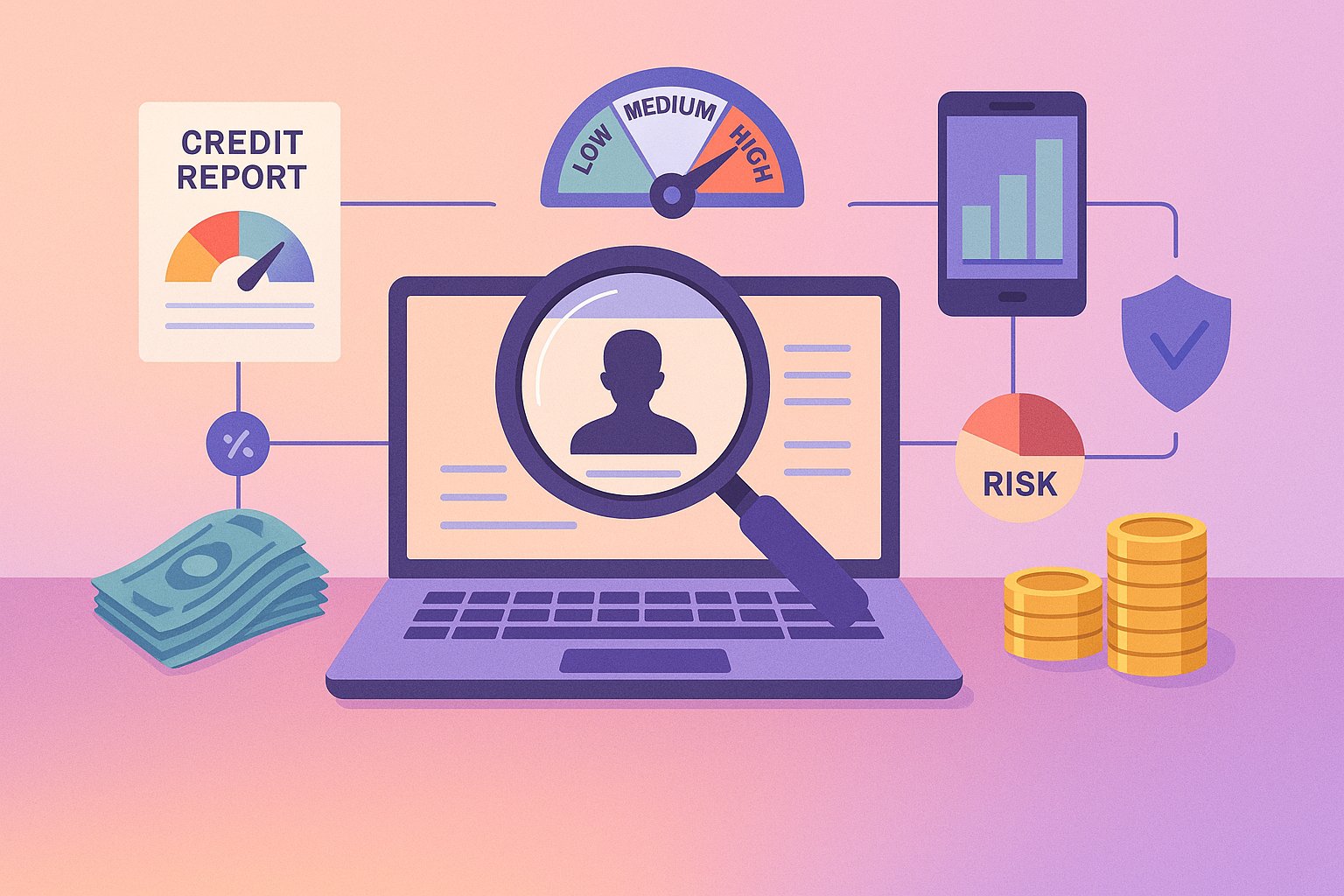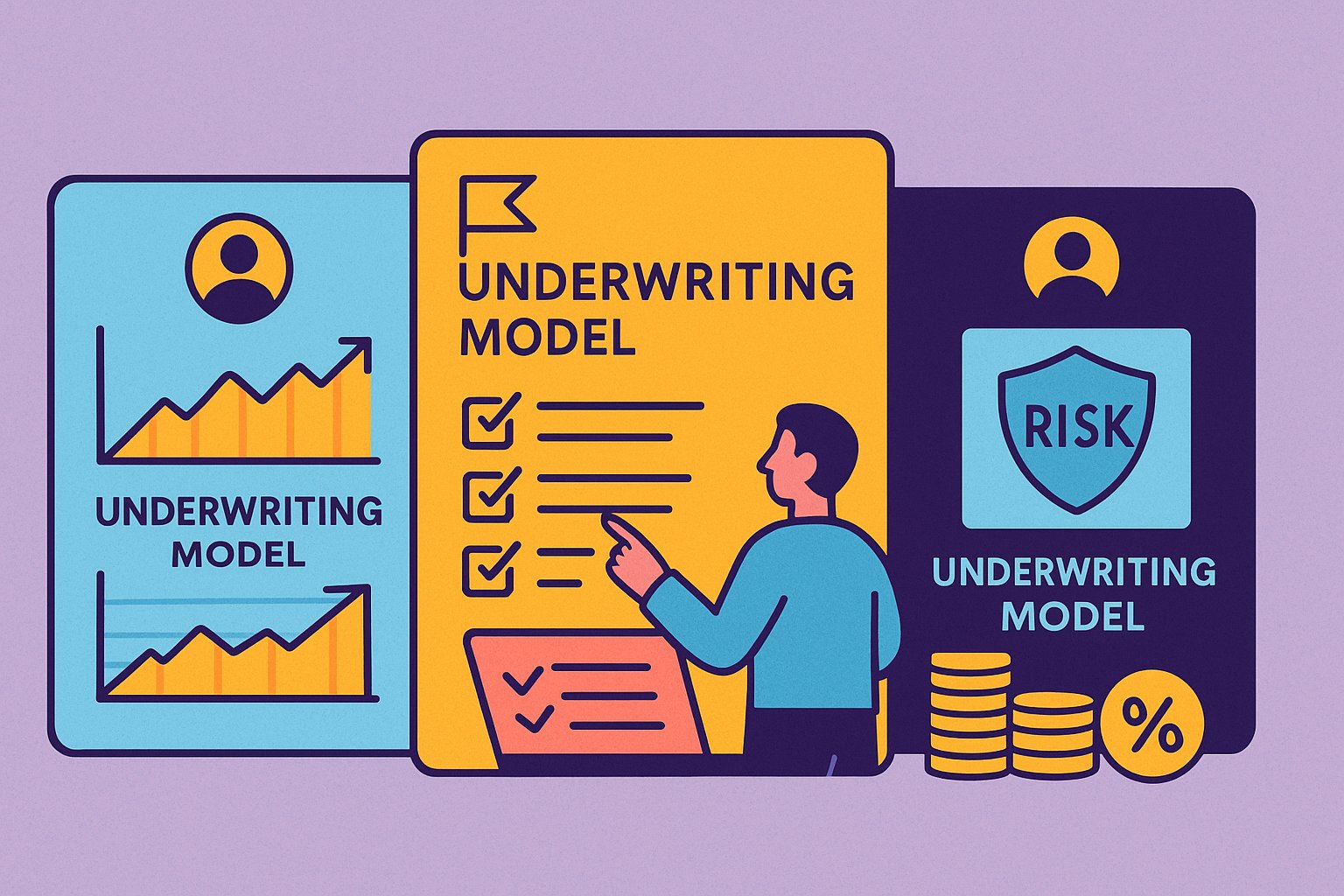Laying the Groundwork: Gathering Essential Loan Documentation
When a borrower initiates a peer-to-peer (P2P) loan application, the journey toward funding begins with assembling a stack of critical documents. Platforms require proof of identity, such as government-issued IDs, to guard against fraud. In addition, applicants must often provide recent pay stubs or tax returns—particularly for self-employed individuals—to demonstrate consistent income. Bank statements serve as a window into spending habits, revealing both regular deposits and discretionary expenditures. These foundational records allow automated decision engines to form an early picture of a borrower’s financial behaviors. Without this documentation in hand, a P2P platform cannot accurately proceed to the next pivotal stages of underwriting.
Deciphering Credit Profiles: The Score Behind the Borrower
Next, underwriting teams—or automated algorithms—dive into a borrower’s credit report, a repository of past payment histories, outstanding balances, and credit inquiries. Credit scores from agencies like Experian, Equifax, and TransUnion often serve as a quantitative shorthand for creditworthiness. A high credit score typically signals a track record of on-time payments and low credit utilization, earning borrowers access to more favorable interest rates. Conversely, a lower score may hint at past delinquencies, charge-offs, or heavier reliance on credit lines. Some P2P platforms complement FICO-based assessments with proprietary scoring models that weigh factors such as length of credit history, diversity of credit types, and the recency of inquiries. By breaking down the credit report into its component elements—late payments, collection accounts, and available credit—underwriters can calibrate risk tiers that guide both pricing and investor confidence.
Income Verification: Confirming the Borrower’s Capacity
Income stability lies at the heart of P2P loan underwriting. Lenders need to know not just how much a borrower earns, but also how reliably those earnings recur. For salaried employees, pay stubs and employer verification letters often suffice to affirm steady monthly wages. However, for freelancers and business owners, platforms may require multiple years of tax returns or profit-and-loss statements to discern consistent revenue streams. Analyzing year-over-year income fluctuations can reveal whether a borrower’s earnings are seasonal, volatile, or steadily ascending. Some platforms even allow connection to secure income verification services, which link directly to payroll or bank accounts. These integrations reduce manual upload errors and expedite the underwriting process. By confirming income through robust methods, underwriters mitigate the risk of extending credit to applicants whose earnings could falter in the months ahead.
Debt Load Assessment: Striking the Balance
Assessing debt obligations is essential to understanding whether a borrower can comfortably accommodate a new loan payment. Underwriters calculate the debt-to-income (DTI) ratio by comparing total monthly debt payments—including mortgages, auto loans, credit card minimums, and any existing P2P notes—to gross monthly income. A lower DTI ratio typically indicates that a borrower has sufficient cash flow remaining after covering ongoing obligations, positioning them as less likely to default. Conversely, a high DTI ratio can serve as a warning signal: it suggests the borrower may be stretching themselves too thin. Each platform sets its own DTI threshold, often capping approvals for applicants with DTIs above a certain percentage. Alongside DTI, underwriters also review installment histories—examining whether past loans were repaid early, on time, or experienced tardy payments. By combining DTI with credit repayment behavior, platforms craft a more holistic understanding of a borrower’s ability to manage debt responsibly.
Employment and Stability: Assessing Reliability
Lenders crave predictability. Underwriting procedures probe employment history to gauge how stable and consistent a borrower’s job situation may be. Applicants typically disclose their employer’s name, length of tenure, and job title. A borrower who has maintained the same position for multiple years projects a lower risk of sudden income interruption. By contrast, frequent job changes or gaps in employment may raise red flags. Some platforms assign greater weight to borrowers employed in recession-resistant industries—such as healthcare or utilities—versus those in cyclical sectors like hospitality. For self-employed individuals or entrepreneurs, the underwriting checklist often extends to business registration documents and profit statements to affirm ongoing operations. When a borrower can demonstrate a reliable employment arc or a flourishing enterprise, lenders feel more confident extending credit, secure in the knowledge that the borrower’s cash flow foundation is solid.
Collateral and Security: When P2P Platforms Require More
While many P2P platforms operate on an unsecured loan basis—meaning no collateral is required—some niche lenders mandate additional security for certain loan types. For example, small business P2P loans may require liens on equipment, real estate, or inventory. In such cases, the underwriting checklist includes appraisals, titles, and insurance documentation to verify the collateral’s existence and value. Real estate-backed notes, often called “secured P2P investments,” demand rigorous property appraisals and title searches. By requiring collateral, lenders can often extend larger loan amounts at lower interest rates, since the tangible asset provides a cushion against borrower default. However, collateralized underwriting adds complexity—and occasionally a higher cost—to the process. Borrowers may find approval timelines extended as platforms coordinate appraisers, legal teams, and lien filings. Nonetheless, the promise of lower rates and larger loan amounts often makes the extra steps worthwhile for both parties.
Alternative Data Signals: Uncovering Hidden Patterns
Beyond conventional credit scores and income metrics, advanced P2P platforms are increasingly tapping into alternative data sources to enrich risk evaluation. These data signals might include utility bill payment histories, rental payment records, and even mobile phone payment logs. By integrating with secure bank APIs, platforms can observe real-time transaction patterns—revealing spending spikes or inconsistencies that might indicate emerging financial stress. Some underwriting models examine social media indicators—such as the level of engagement in professional networks—as proxies for borrower stability. Others analyze geospatial data: a borrower residing in a region with climbing unemployment or declining home values could be subject to heightened risk. By layering these alternative signals atop traditional metrics, underwriting algorithms can extrapolate a more nuanced risk score, capturing subtleties that legacy credit models might overlook.
Manual Underwriting Touchpoints: Handling Edge Cases
Despite the surge in automated decision engines, human underwriters still play a vital role—especially when applications defy standard categorization. Complex borrower profiles, such as those with recent bankruptcy filings who have since stabilized financially, demand a manual review to parse extenuating circumstances. Similarly, applicants with irregular income streams—such as gig economy workers juggling multiple contracts—may require underwriters to sift through varied documentation to verify sustainable earnings. In these edge cases, conversational interviews or phone verifications can help clarify anomalies in the data. Underwriters may ask borrowers to explain past credit mishaps or detail contingency plans for future income disruptions. These qualitative nuances often tip the scales in borderline applications, allowing platforms to weigh borrower resilience beyond what an algorithmic checklist can capture. By blending automated and manual underwrites, P2P platforms achieve a balance between scale and personalized assessment.
The Role of Automated Decision Engines: Speed and Consistency
Automation has become the cornerstone of modern P2P underwriting. Once borrowers upload their documentation, decision engines synthesize credit bureau data, income records, and alternative signals to generate near-instant risk assessments. These algorithms leverage machine learning to continuously calibrate risk weights based on updated repayment data, economic trends, and macroeconomic shifts. Automation expedites funding timelines—applicants can receive loan offers in minutes rather than days—and ensures consistent application of underwriting criteria, eliminating many forms of human bias. By maintaining a transparent risk grading system, platforms can openly communicate grades and projected default probabilities to potential investors. While no algorithm is infallible, the iterative feedback loop between loan outcomes and model adjustments refines predictive accuracy over time, bolstering platform integrity and investor trust.
Regulatory Compliance: Navigating Legal Requirements
Underwriting checklists for P2P loans must align with evolving regulatory frameworks. In the United States, platforms comply with federal statutes such as the Truth in Lending Act (TILA) and the Equal Credit Opportunity Act (ECOA). These laws require clear disclosure of annual percentage rates (APRs), fee structures, and loan terms to ensure borrowers are fully informed. Anti–money laundering (AML) and know-your-customer (KYC) regulations also factor into the underwriting process, compelling platforms to verify the identities of borrowers to prevent illicit finance. For international P2P lenders, additional regulatory bodies—such as the Financial Conduct Authority (FCA) in the United Kingdom or the European Securities and Markets Authority (ESMA)—impose their own compliance standards. Underwriters must therefore track shifting regulatory mandates and embed compliance checkpoints—such as red flag alerts for high-risk transactions—within their risk evaluation frameworks. By doing so, platforms safeguard both borrowers and investors from potential legal exposures.
Pricing the Risk: Translating Assessment into Interest Rates
Once underwriting is complete, platforms translate risk assessments into interest rate tiers. Low-risk borrowers—those with stellar credit profiles, stable incomes, and favorable alternative data—earn the most competitive rates, which might mirror or slightly exceed prime consumer loans from banks. Mid-tier borrowers receive moderate rates, balancing reasonable risk with rewarding returns for investors. High-risk borrowers face steeper rates to compensate lenders for the elevated default probability. Interest rate brackets typically span a wide spectrum—ranging from single-digit percentages for top-tier borrowers to mid-20s or even 30% for those in lower tiers. This tiered pricing mechanism incentivizes borrowers to maintain positive credit behaviors: timely payments can boost credit scores and unlock more attractive rates on future refinance opportunities. For investors, transparent rate cards tied to borrower risk grades clarify expected yields and facilitate portfolio diversification.
Post-Funding Monitoring: Ensuring Ongoing Performance
The underwriting checklist does not conclude at loan disbursement. To safeguard investor funds and detect early warning signs of borrower distress, P2P platforms often employ ongoing monitoring protocols. This may include periodic rechecks of credit reports, which can flag new delinquencies or credit inquiries that alter a borrower’s risk profile. Some platforms continue to analyze transaction data—tracking whether borrowers maintain steady deposit patterns or exhibit sudden cash flow disruptions. For loans backed by collateral, periodic appraisals may verify that the asset retains its appraised value. When underwriters detect potential red flags—such as multiple missed payments—they may trigger automated remediation pathways, including customized payment plans or early collection efforts. By coupling pre-funding due diligence with dynamic post-funding oversight, platforms strive to maintain high portfolio performance rates and minimize investor losses.
Charting a Course for Responsible Borrowing and Lending
An effective underwriting checklist for peer-to-peer loans weaves together multiple strands: from core credit metrics to alternative data, manual reviews to automated decision engines, and regulatory compliance to post-funding surveillance. For borrowers, understanding this intricate tapestry empowers them to proactively improve their profiles—by reducing debts, stabilizing incomes, and maintaining a strong payment history. For investors, decoding these underwriting steps illuminates the risk-return trade-offs associated with each loan grade, enabling strategic portfolio allocations that align with individual risk appetites. As P2P lending continues to expand globally—driven by technological advancements and investor demand—platforms will further refine their underwriting blueprints. Innovations in artificial intelligence, blockchain security, and real-time data integration promise even sharper risk prediction capabilities in the years ahead.
By breaking down the underwriting checklist for P2P loans, stakeholders gain a transparent roadmap for navigating a marketplace that blends democratized access to capital with rigorous risk management. Whether you are seeking your first online loan or building a diversified P2P investment portfolio, appreciating these underwriting nuances equips you to make informed, confident decisions. In a world where data beats intuition and algorithms complement human insight, mastering the underwriting journey is the key to unlocking sustainable growth—one responsibly funded loan at a time.




